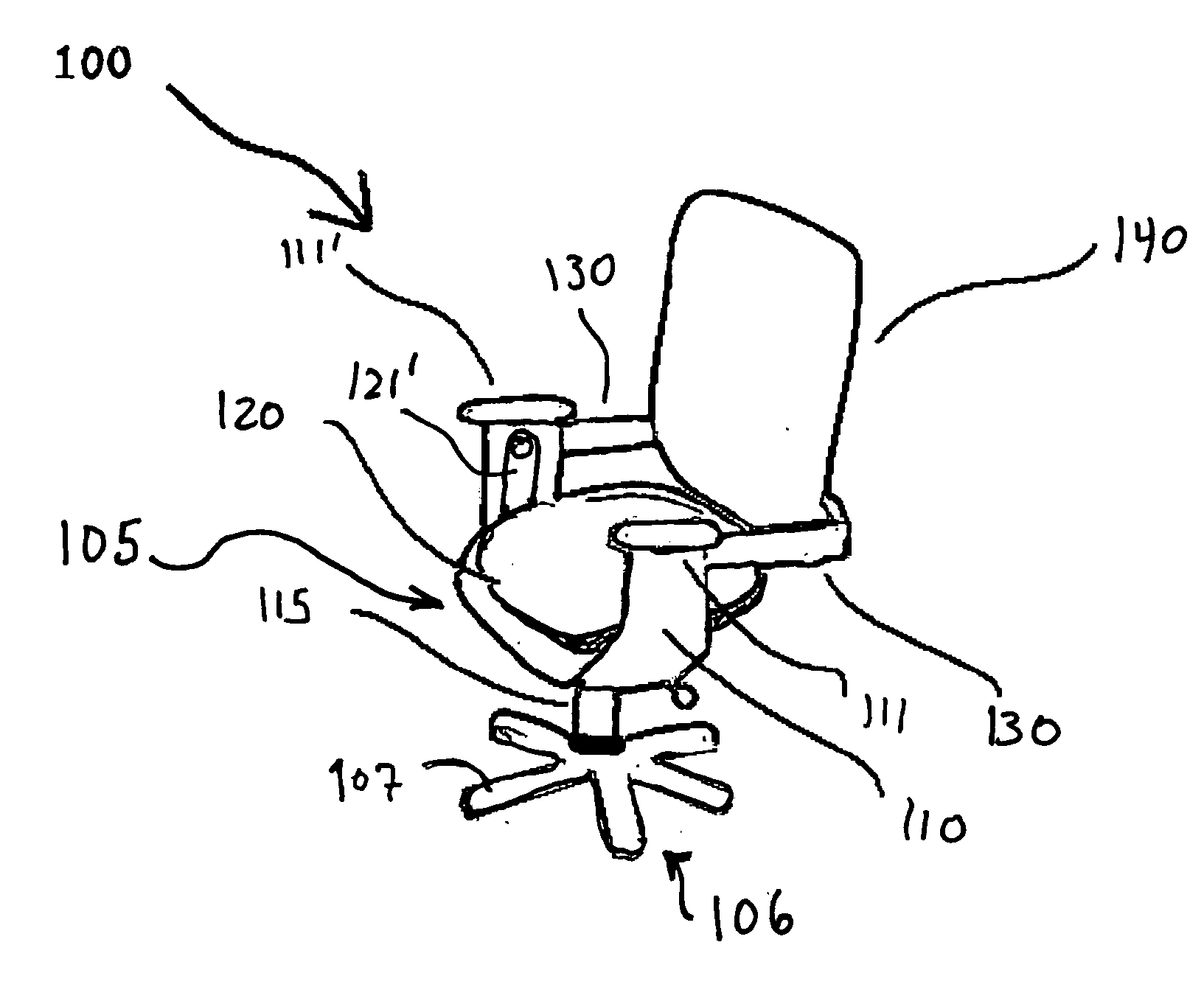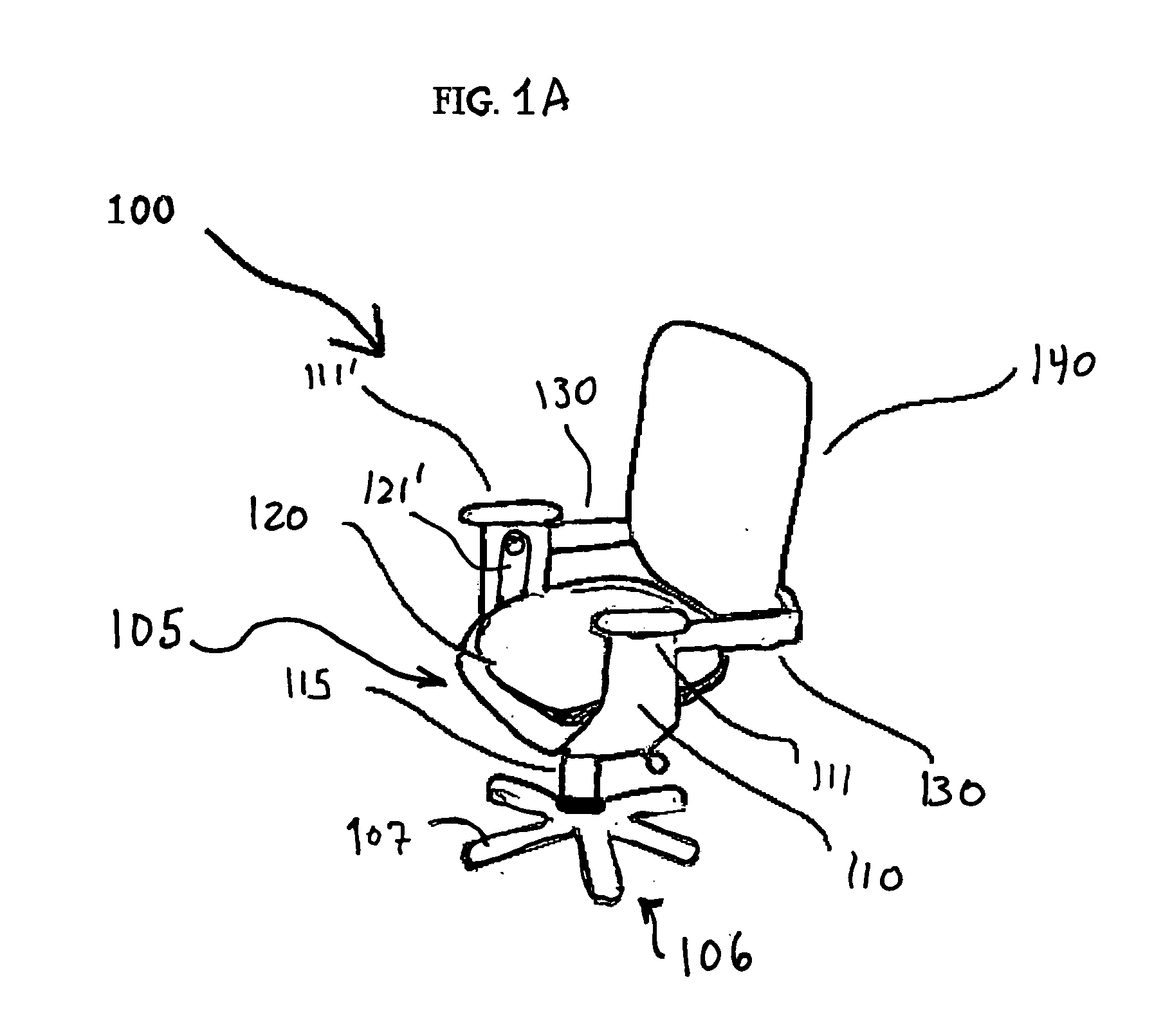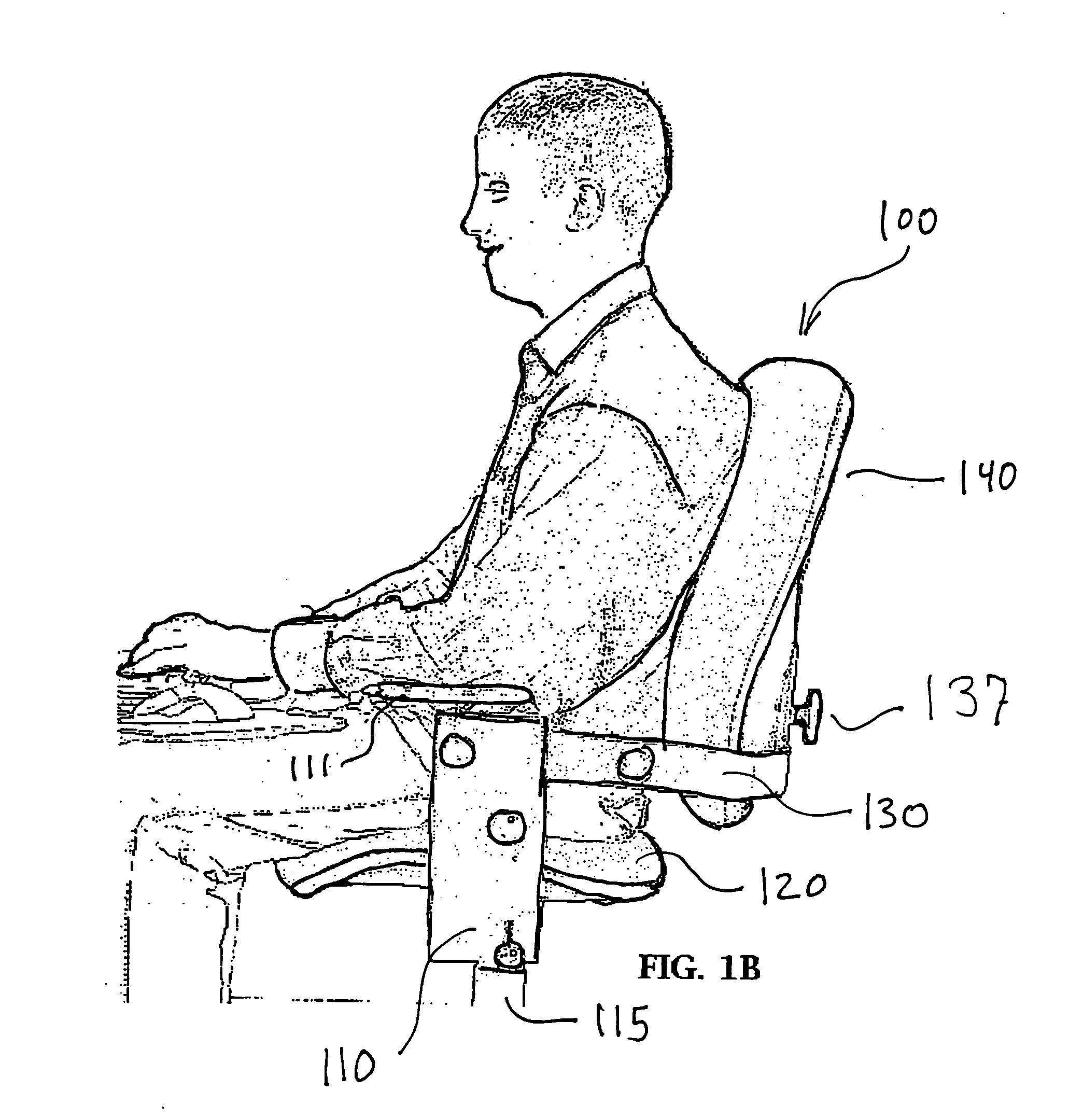Ergonomic chair
a chair and ergonomic technology, applied in the field of ergonomic chairs, can solve the problems of inability to fully benefit users, suffer from repetitive strain injuries to the extremities, discomfort and stiffness, inherent complexity of these mechanisms, etc., and achieve the effect of allowing unrestricted movement, facilitating ergonomically correct posture, and facilitating postur
- Summary
- Abstract
- Description
- Claims
- Application Information
AI Technical Summary
Benefits of technology
Problems solved by technology
Method used
Image
Examples
Embodiment Construction
[0030] Referring to FIGS. 1 through 8, wherein like reference numerals refer to like components in the various views, there is illustrated therein a new and improved Ergonomic Chair, generally denominated 100 herein.
[0031] In accordance with the present invention FIG. 1A illustrates a chair 100 having a frame 105 that is supported by a horizontal supporting base section 106, and a vertical post 115 extending upward there from. Frame 105 includes a forked armature 110 with the arms of the fork extending upward. The seat support 120 is suspended from the terminals of fork arms by a pair of swing arms 121 and 121′ that rise vertically from opposing sides of the seat support to define a first rotary axis 210. The swing arms 121 rotate about rotary coupling 150. Alternatively, the seat support may be suspended with the trough of a U-shaped brace, with the arms or upright section of the U-shape corresponding to swing arms 121 and 121′.
[0032] Further, a U-shaped mounting bracket 130 is d...
PUM
 Login to View More
Login to View More Abstract
Description
Claims
Application Information
 Login to View More
Login to View More - R&D
- Intellectual Property
- Life Sciences
- Materials
- Tech Scout
- Unparalleled Data Quality
- Higher Quality Content
- 60% Fewer Hallucinations
Browse by: Latest US Patents, China's latest patents, Technical Efficacy Thesaurus, Application Domain, Technology Topic, Popular Technical Reports.
© 2025 PatSnap. All rights reserved.Legal|Privacy policy|Modern Slavery Act Transparency Statement|Sitemap|About US| Contact US: help@patsnap.com



